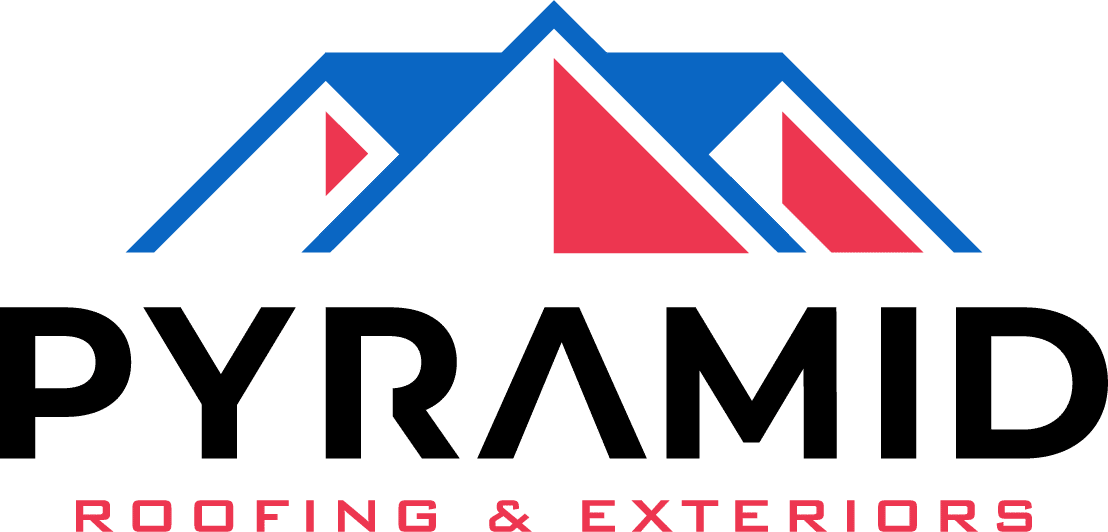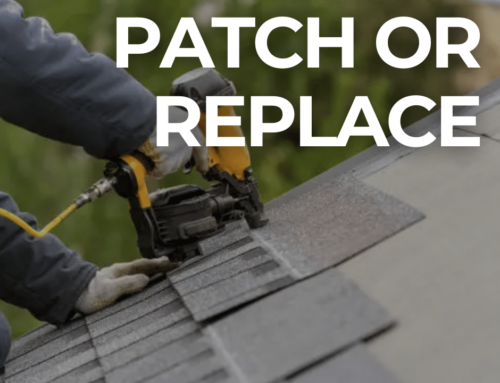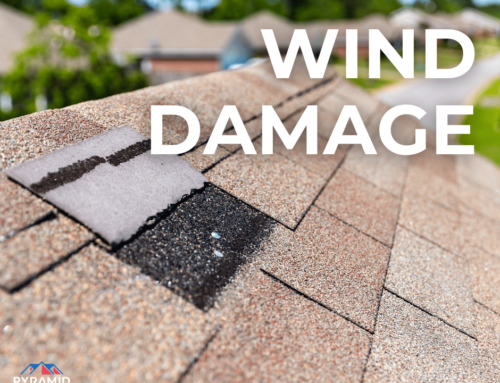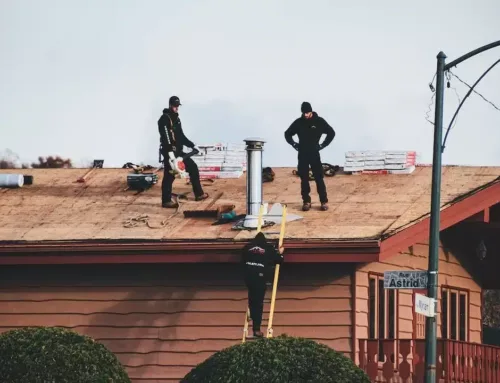Are you a homeowner in the Kansas City metropolitan area with roof damage from recent storms? Understanding and filing insurance claims can be an intimidating process, but Pyramid Roofing is here to help. We have experience helping homeowners navigate the paperwork associated with roof damage insurance claims, as well as providing tips for assessing the extent of damage and preparing your home for future potential hazards. Read on to learn more about how we can assist you through this difficult time.
Table of Contents:
- Understanding Roof Damage Insurance Claims
- Assessing the Extent of Roof Damage
- Working with Your Insurance Company on a Claim
- Choosing a Reputable Roofer for Repairs and Replacements
- Preparing for Future Storms and Other Potential Hazards
- FAQs in Relation to Roof Damage Insurance Claims
- Conclusion
Understanding Roof Damage Insurance Claims
Roof damage insurance is an important coverage to have for homeowners in the Kansas City metropolitan area. Grasping the particulars of your policy, filing a claim correctly, and being aware of typical roof damage can help safeguard your home and guarantee that you are adequately compensated.
Comprehending the range of protection provided by your roof damage insurance is critical. Most policies will cover damages caused by severe weather events such as hail or windstorms. They may also cover other forms of physical property damage such as fire or vandalism. It’s important to check with your insurer for details on what is specifically included in their coverage so that you know exactly what kind of protection you have should something happen.
Filing a claim for roof damage can be intricate, contingent on the policy specifics and amount of harm. Generally speaking, however, most insurers require documentation from both yourself and any contractors involved in assessing or repairing the damages before they will approve payment for repairs or replacements. This includes photos taken at different angles along with estimates from qualified professionals detailing the cost of repairs needed as well as any additional work required due to structural instability caused by water intrusion over time.
Common sources of roof damage can include high winds, heavy rains which can loosen or tear off shingles; falling branches from nearby trees; aging materials that have reached the end of their life expectancy and are no longer able to withstand environmental conditions; incorrect installation or inadequate maintenance resulting in moisture build-up inside attics, animals nesting within walls and roofs creating structural issues over time; insufficient insulation leading to ice dams when the snow melts then refreezes at lower levels near gutters and eaves forming pools where water seeps through cracks into ceilings below triggering mold growth among other complications due to improper flashing around chimneys skylights vents pipes, etc…
Roof damage insurance is an important part of protecting your home and property. Knowing what is covered, how to file a claim, common causes of roof damage, and tips for preventing it can help you make the most out of your coverage.
What is Covered by Roof Damage Insurance? Roof damage insurance generally provides protection for any unexpected, sudden harm that is caused to a structure or the items within it by external forces like fire, windstorms, hail storms, lightning strikes, or other natural occurrences. Coverage may also include repairs needed due to normal wear and tear over time. It’s essential to thoroughly examine your policy so you can comprehend precisely what is safeguarded by your plan.
Contact your insurer promptly upon discovering roof damage caused by a force outside of your control to determine if you are eligible for coverage and can begin repairs with local contractors. Your provider will likely send an adjuster out to assess the situation and determine if there are any benefits available under your policy. Once approved for coverage, work with the adjuster on getting estimates from local contractors who specialize in roof repair services so they can begin making necessary repairs quickly and efficiently while staying within budget constraints set forth by the insurer.
Weather-related events such as high winds and hail storms are often to blame for extensive roof damage, but some can be traced back to poor maintenance practices like not replacing worn shingles in a timely manner. This can lead to water infiltration that causes rot underneath the shingles, resulting in premature failure and costly repairs if left unchecked.
Regularly inspecting all components on roofs including flashing around chimneys, vents, pipes, etc., ensuring gutters are free from debris and properly sloped away from house foundation walls, plus cleaning off leaves, branches, moss, etc. before winter sets in can help reduce the chances of severe weather-related damages occurring during storm season greatly reducing potential costs associated with repairing those types of issues later down the line.
Grasping the fundamentals of roof damage insurance claims is essential for making knowledgeable choices concerning one’s abode and property. Assessing the extent of any existing or potential damage can help you determine if professional assistance is needed, as well as identify any sources of water intrusion that could cause further problems.
Assessing the Extent of Roof Damage
When assessing the extent of roof harm, a range of variables must be taken into account. Signs of structural damage should be identified and evaluated for potential repair or replacement needs. Leaks and other sources of water intrusion must also be located in order to prevent further damage. Evaluating the age and condition of your roofing materials will help you determine if professional assistance is needed for repairs or replacements.
Signs of Structural Damage:
When inspecting your roof, look out for signs such as missing shingles, curling edges on shingles, exposed nails, cracked sealant around flashing, sagging areas in the decking beneath the shingles, or visible light coming through from inside your attic space. If any of these signs are present then it’s time to call a qualified contractor who can evaluate the severity and recommend repairs or replacement options as necessary.
Identifying Leaks:
One common cause of roof damage is leaks caused by improper installation or wear and tear over time. Water stains on ceilings below an attic space may indicate a leaky roof that needs attention before more serious issues arise like mold growth due to moisture buildup inside walls or ceiling cavities. To find where exactly the leak is coming from requires careful inspection both outside and inside your home so that proper repairs can be made quickly before further damage occurs.
Evaluating Age & Condition:
Another factor when assessing how much work may need to be done on your roof is its overall age and condition; older roofs tend to require more frequent maintenance while newer ones may not need as much attention yet depending on their material type (e.g., asphalt shingle vs metal). It’s best practice to have a certified inspector come out every few years just so they can check up on things like loose fasteners which could lead to larger problems down the road if left unchecked too long without being fixed properly the first time around.
Assessing the magnitude of roof destruction is vital to decide if professional help is necessary. Moving on, working with your insurance company on a claim requires gathering the necessary documentation and submitting an accurate estimate of repair costs.
Working with Your Insurance Company on a Claim
Submitting a claim for roof damage necessitates being familiar with the procedure of dealing with your insurer. Gathering all necessary documentation, submitting an accurate estimate of repair costs, keeping track of communication with your insurance company, and understanding the process for approving or denying claims are all key steps in getting the most out of your claim.
Gathering Necessary Documentation for Your Claim:
Before filing a claim, you should make sure that you have all required documents such as photos or videos documenting any damage to your roof. You will also need receipts and estimates from contractors who have inspected the damage and can provide an accurate cost estimate for repairs. Having this information on hand when filing a claim will help speed up the approval process.
When submitting a claim to your insurer, it is essential to include an exact appraisal of repair expenses from qualified roofing specialists. Be sure to compare multiple estimates before selecting one so that you get the best value for money when making repairs. Additionally, make sure that any additional coverage needed due to unforeseen circumstances is included in the final cost estimate submitted with your claim form.
Keeping Track of Communication With Your Insurance Company: After submitting a claim form and supporting documents, it’s important to keep track of communication between yourself and your insurer regarding the progress of processing the request. This includes checking emails regularly as well as following up by phone if there has been no response after several days or weeks have passed since the submission date. Keeping good records will ensure that nothing falls through the cracks during this time-sensitive process which could result in delays or denials due to missed deadlines set by insurers themselves
Obtaining the most favorable outcome from your insurance company may involve a lengthy and intricate process, so it is wise to select a reliable roofer like Pyramid Roofing for any necessary repairs or replacements.
Choosing a Reputable Roofer for Repairs and Replacements
When it comes to choosing a reputable roofer for repairs and replacements, research is key. Start by researching local contractors and their services. Investigate the materials they employ, the proficiency of their personnel, and any qualifications or permits that may be compulsory in your region. Additionally, ask around for recommendations from friends or family who have had similar work done recently.
Next, obtain written estimates from multiple companies so you can compare prices before making a decision. Be sure to read through each estimate carefully and inquire about any additional fees that may not be included in the initial quote. When verifying licenses, certifications, and insurance coverage of potential roofers make sure to double-check with state agencies as well as online resources like the Better Business Bureau (BBB).
Finally, check references and reviews from previous customers to get an idea of how satisfied people are with the contractor’s workmanship. Ask questions such as: Did they complete the job on time? Was there anything unexpected that came up during installation? Were there any issues after completion? By doing this due diligence you can ensure you find a reliable roofer who will do quality work at an affordable price
When selecting a roofer, ensure they possess the necessary credentials such as licenses, certifications, and insurance coverage; obtain references from past customers and secure written estimates for added protection. To further protect yourself in case of future storms or other potential hazards investing in regular maintenance inspections and taking advantage of discounts on premiums can help safeguard your home.
Preparing for Future Storms and Other Potential Hazards
Regular maintenance and inspections are key for homeowners to prepare for future storms and other potential hazards. Investing in periodic roof assessments is a vital step for safeguarding your house from weather-related harm, as well as finding any minor issues before they become major dilemmas. Roofers can check the condition of your shingles, inspect flashing around vents and chimneys, evaluate the attic ventilation system, look for signs of leaks or water damage, and assess any existing structural damage. Regularly scheduled maintenance can help you identify weak spots that may need repair or replacement before a storm hits.
Upgrading your home’s exterior protection is also important when preparing for severe weather events. Reinforcing windows with impact-resistant glass can help protect against flying debris during high winds while adding additional layers of insulation to walls helps keep moisture out during heavy rains. Additionally, investing in hurricane shutters or metal panels can provide added protection from hail or windborne objects like tree branches. Taking proactive steps now will ensure your home remains safe if a storm does hit later on down the line.
Finally, taking advantage of discounts on premiums is one more way homeowners can be better prepared should they experience unexpected roof damages due to inclement weather conditions such as hail storms or hurricanes. Many insurance companies offer discounted rates depending on how often routine maintenance checks are performed by certified professionals; meaning those who invest time into keeping up with regular upkeep could see some savings over time. Being aware of these options could save money long term which would be beneficial should costly repairs ever be needed due to unforeseen circumstances related to extreme weather patterns affecting roofs across Kansas City metropolitan area homes.
FAQs in Relation to Roof Damage Insurance Claims
How do insurance adjusters determine roof damage?
Insurance adjusters determine roof damage by examining the age of the roof, inspecting for signs of visible damage such as missing shingles or broken tiles, and assessing any underlying issues that could cause further problems. They also take into account factors like weather conditions and whether proper maintenance was done on the roof. Adjusters may also use specialized tools to measure water saturation levels in order to accurately assess the extent of any potential damages.
How many shingles need to be missing for insurance to replace a roof?
The exact number of shingles that need to be missing for insurance to replace a roof depends on the policy and the age of the home. Generally, most policies require at least 25% of an area or more than five square feet (or three bundles) to be missing before they will consider replacing it. However, some policies may also factor in other factors such as the age and condition of existing shingles when determining if replacement is necessary. Before filing a claim, it is essential to carefully review the policy’s terms.
What do you say when filing a roof claim?
When filing a roof claim, it is important to provide detailed information about the damage. This includes photos of any visible damage, as well as an accurate description of what happened and when. Be sure to include the contact details of everyone who is involved in carrying out repairs. Be prepared to answer questions from your insurance provider regarding how much coverage you have on your policy and if there are any applicable deductibles or exclusions that may apply. Finally, keep copies of all documents related to the claim for future reference.
What is considered roof damage?
Roof damage is any deterioration of the roofing materials or structure that affects its ability to protect a building from weather and water. This can include cracked, curled, missing, loose, or otherwise damaged shingles; punctures in the membrane; rusted flashing; deteriorated sealants around skylights and chimneys; leaking gutters and downspouts; animal damage to vents or other areas of the roof system. It is essential to get a certified specialist to tackle any of these issues promptly in order to forestall more serious difficulties, like water damage inside the building.
Conclusion
To make sure your roof damage insurance claim is handled efficiently, it’s important to be knowledgeable about the coverage you have and how much your deductible is. Understanding what kind of coverage you have and how much your deductible is will help you make sure that all necessary repairs are covered in a timely manner. Having a knowledgeable roofer on your side can guarantee that any fixes or replacements to your home abide by industry standards and remain long-lasting. Finally, preparing for future storms by making improvements like installing gutter guards can prevent further damage from occurring down the road.
If you’re looking for reliable roof damage insurance claims solutions, look no further than Pyramid Roofing. Our experienced contractors provide top-notch service to ensure your claim is handled quickly and efficiently.






